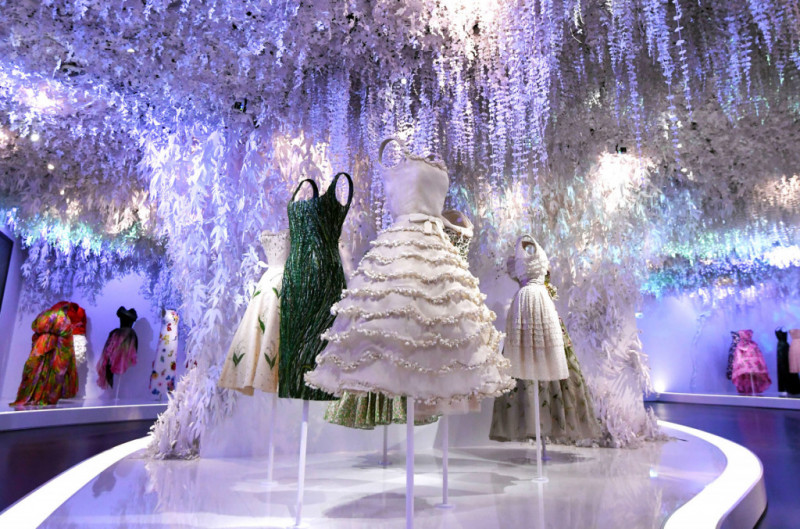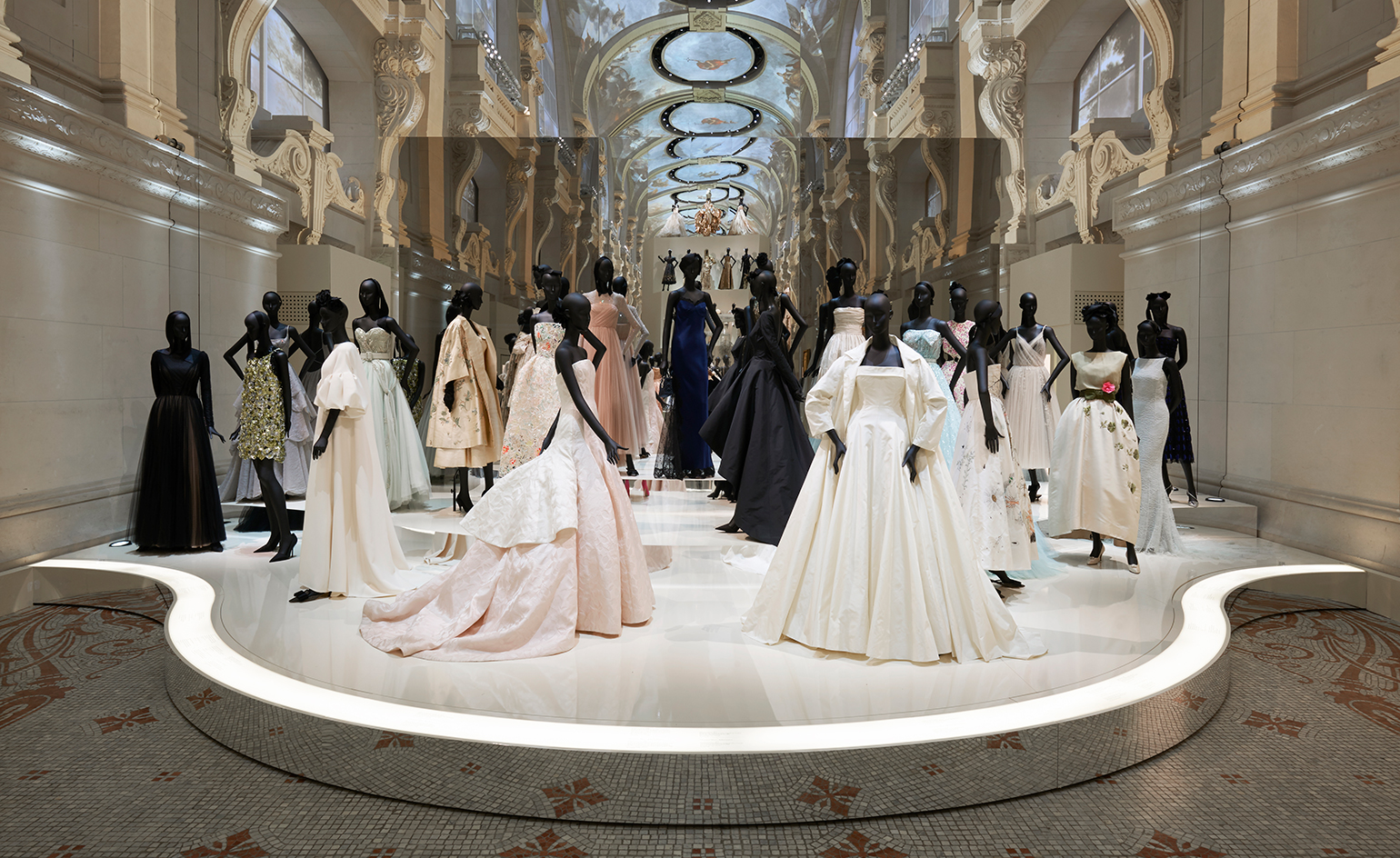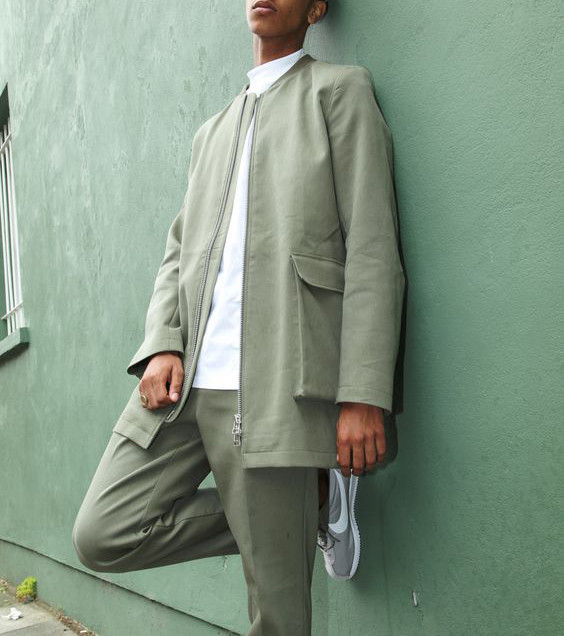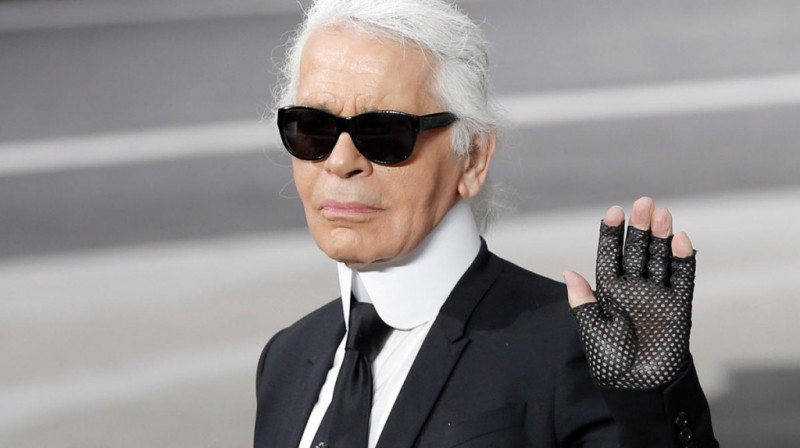
The Musée des Arts Décoratifs was celebrating the 70th anniversary of Dior from 5th of July 2017 until 7th of January 2018. This lavish exhibition invites all of its visitors to travel through the universe of Dior, its founder and the famous designers that succeeded him such as Yves Saint Laurent, Marc Bohan, Gianfranco Ferré, John Galliano, Raf Simons and the most recent, Maria Grazia Chiuri.
It does not come as a surprise anymore when there is a big exhibition in some prestigious museum dedicated to fashion. It is pretty clear - fashion is a part of contemporary history!
It is possible, though, that we are surprised by what these 70 years of one big fashion brand can bring with them, following all the changes the world has faced during this period. Just try to imagine all the pieces, objects and stories that are witnessing all the secrets of Dior built up for half of the last and entire duration of the current century. The curatorial work, carried out by Florence Müller and Olivier Gabet, was certainly not easy. Not only because of the exciting archaeological work of digging through the endless amount of scattered data, but also because of the task of bringing it together into a single story. Their choice was to present the history of Dior both chronologically and thematically and to use for the first time a special space of the Musée des Arts Décoratifs, the so-called nave, a space of 3000 square meters.
Don’t doubt it, from choice of pieces and the venue itself, to pedestals and light effects, every detail is impressive.
The entrance to the exhibition presents a story about Dior’s life, his youth and relationships to artists and art. In the crazy years of the twentieth century, Dior was avant-garde, the same as the rest of Europe.
It may be familiar to you or not, but ahead of entering the fashion world, Dior ran an art gallery in Paris from 1928 to 1934 with two of his friends, Jacques Bonjean i Pierre Colle. There were many future stars in his vicinity, such as Giacometti, Dalí, Calder, Leonor Fini, Max Jacob, Jean Cocteau and Christian Bérard. So, the Dior exhibition includes paintings, sculptures and documents from this period of his personal history, but also history of the 20th century in general.
The curators of the exhibition have obviously made an effort to make the connection between Christian Dior, his artistic affinities and his creations obvious.
By going through the exhibition, direct references to paintings and sculptures are unveiled, but also the references to everything that makes up the art of living: wallpapers, fabrics and ceramics. Besides his interest for the newest and the most impudent accomplishments from the world that surrounded him, Dior also loved antiques and decorative art pieces. He was a collector of art from the period of Art Nouveau and was amazed by the 18th century. What other way to describe this than - eclectic!
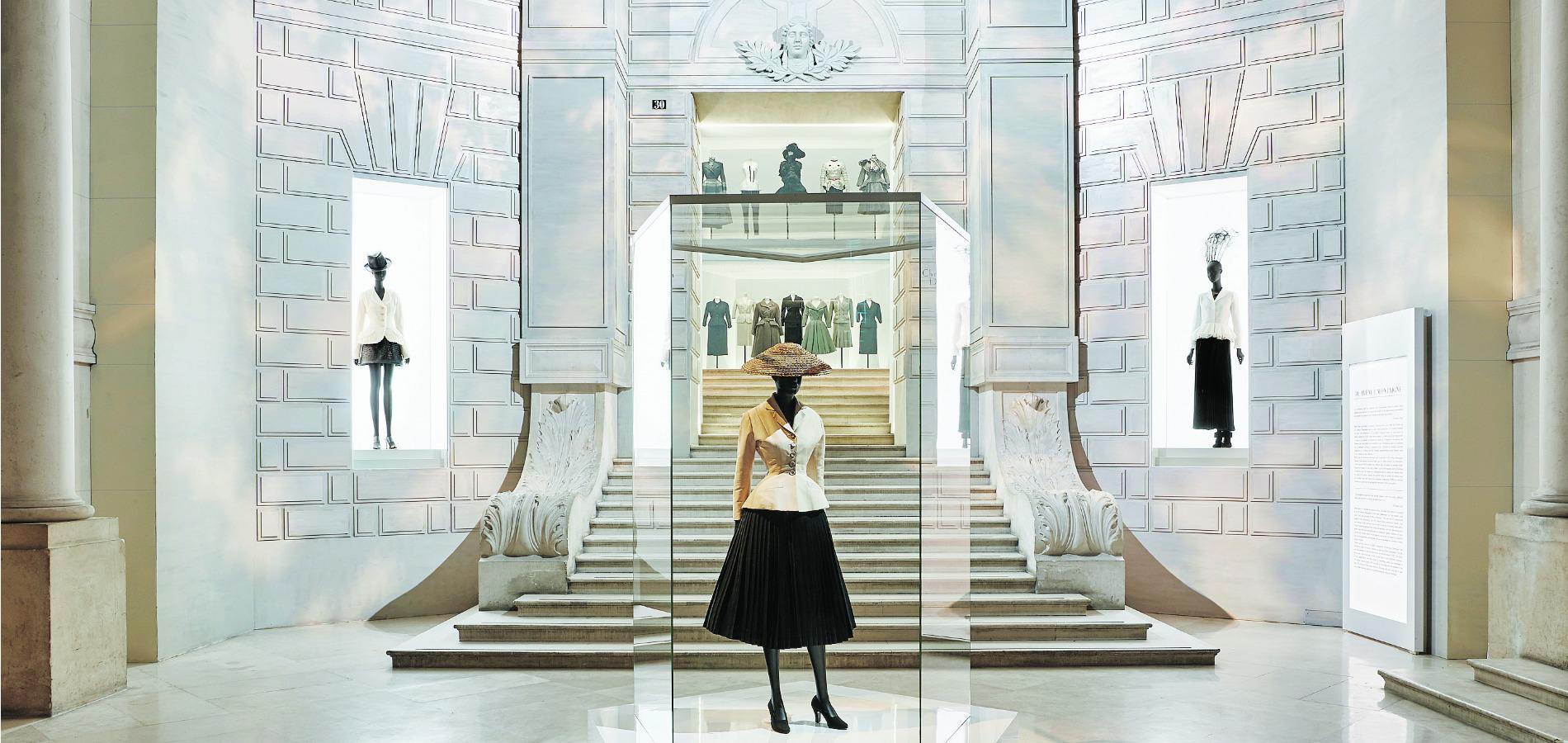
When you connect this to his main profession, which was to be a fashion illustrator, and the ambition to succeed in the high fashion industry, it is no surprise that being close to the art had left a certain mark on his later work. As a lover of art and museums, Christian Dior became one of the favourite subjects in the eyes of fashion experts that try to figure out his connections between high fashion and all forms of art.
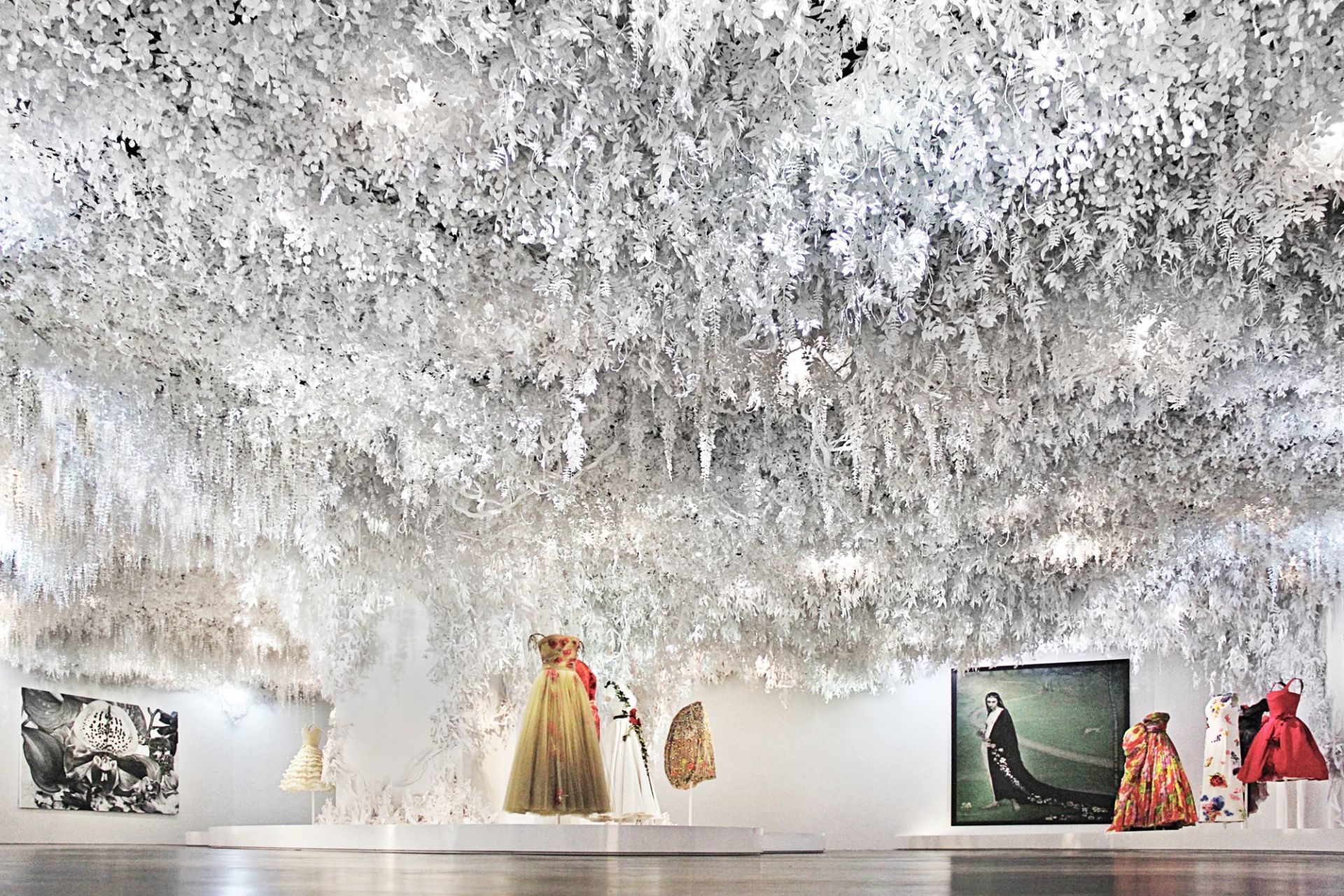
This exhibition about making dreams contains more than 300 gowns designed from 1947 to this day. They are all connected by a certain narrative that brings emotions, people’s stories, inspiration, creations and heritage.
Besides the gowns, there are many fabrics and fashion photos, hundreds of documents, including illustrations, sketches, letters and notes, as well as advertisements, accessories, hats, jewels, bags, shoes and perfume bottles.
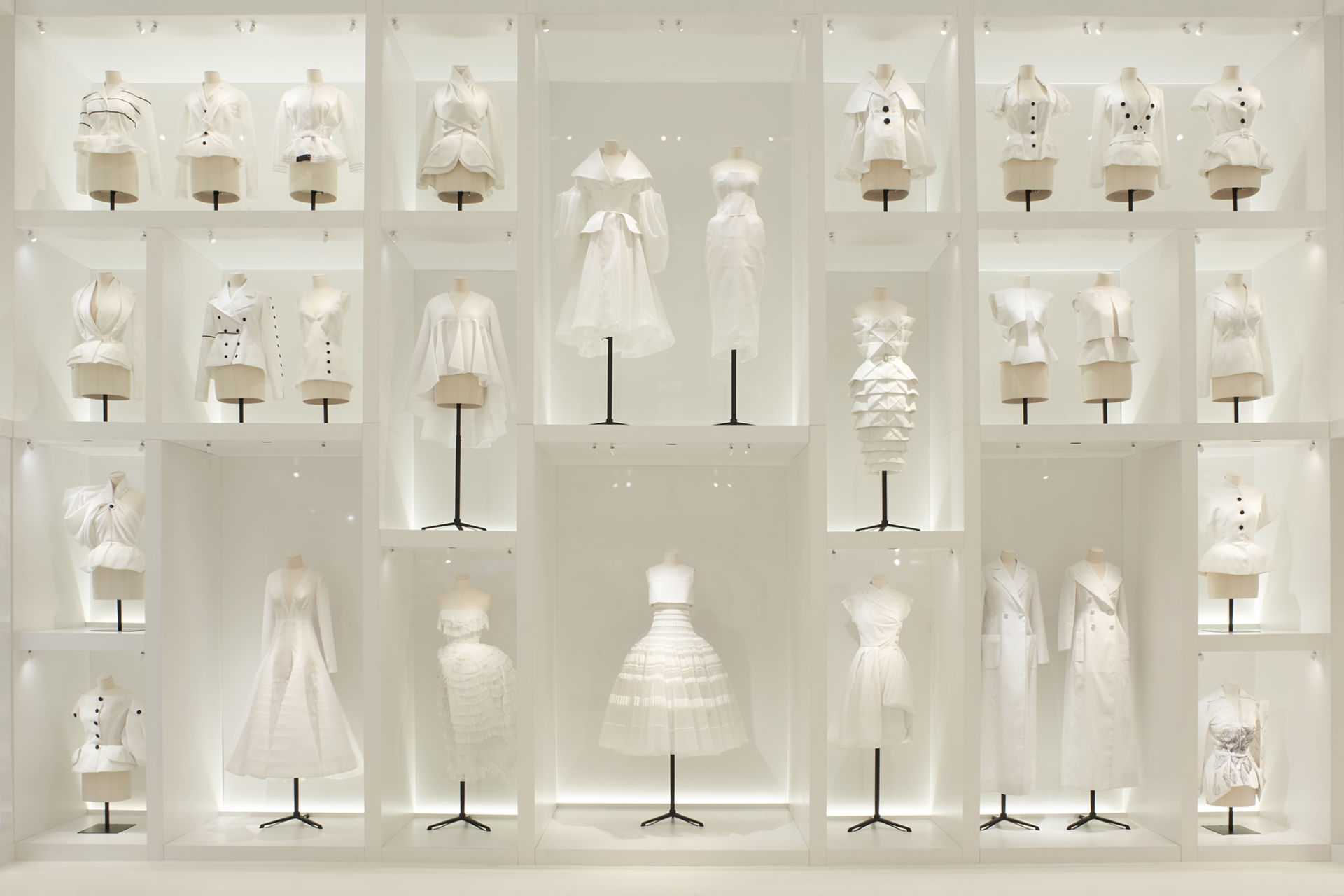
The universe made by Christian Dior and six artistic directors that succeeded him and built the name and the influence they make on the fashion industry in France, but also worldwide, was adequately presented during this exhibition. All those who contributed in any way to making Dior’s style and culture as we know it today were also presented. In the artistic researches of Dior participated a few very important people such as Frédéric Castet, in charge of design of fur, Serge Lutens, Tyen and Peter Philips, as well as François Demachy, founder of the perfumes.
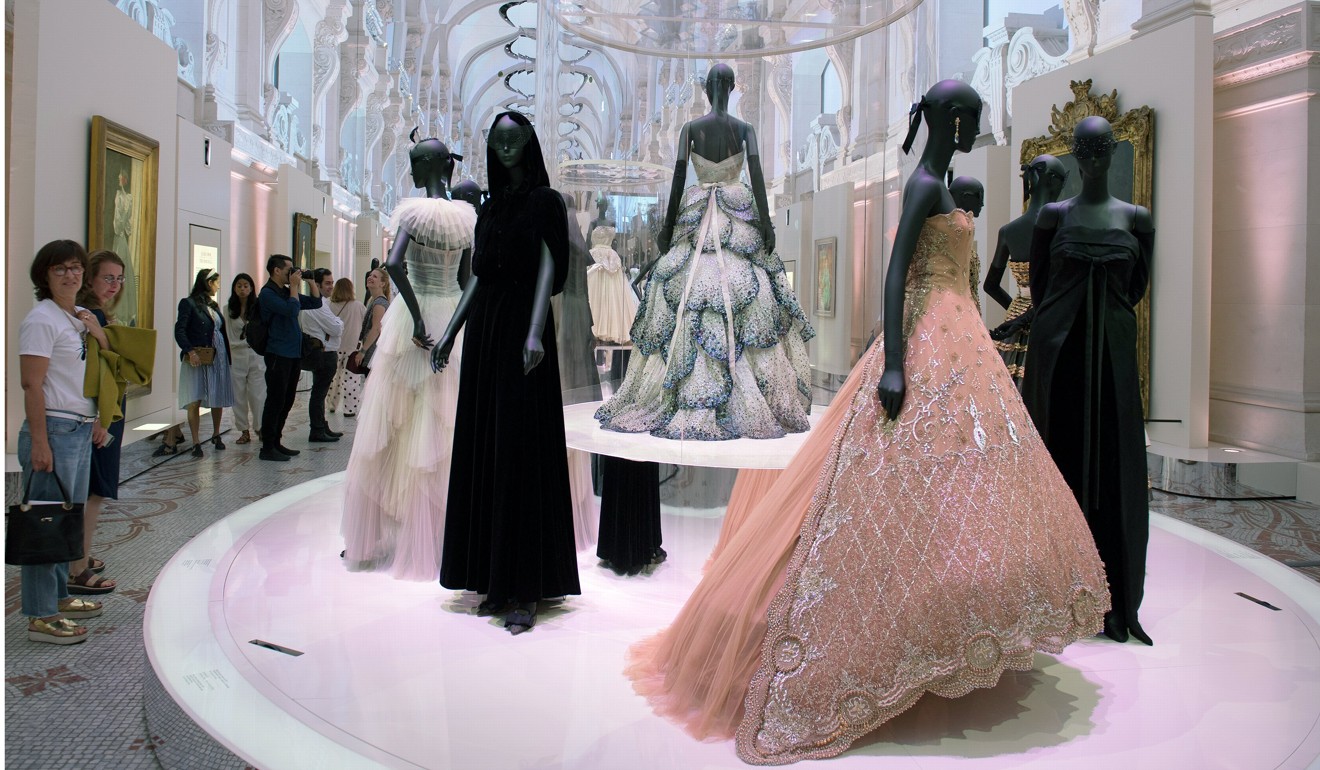
The exhibition is surely a voyage through time. From 1947 to 2017, there were some significant changes in our world. We can say that Dior was the starting point of the fashion world, bringing a certain aesthetic and starting the golden period of fashion.
Even though there were a lot of changes, the energy that is connected to Dior as well as its heritage are preserved. It is interesting that Dior was actually the head of this company only for 10 years out of 70 that are being marked. Since 1957, Dior has been led by six different designers, and each of them have one gallery dedicated to them in an attempt to analyse how and how much their creations stayed true to Christian’s visions of high fashion. These designers definitely have their own differences, for example young Yves Saint Laurent was showing distinct boldness, compared to the more rational approach of Marc Bohan. He was followed by the colourful arrival of Gianfranco Ferré, and then an even more dramatic and bold era of fashion punk with John Gallian. Right after that we have minimalistic Raf Simons and most recently, feministic vision to fashion of Maria Grazia Chiuri. And no one knows what comes next!
Most of the pieces in the exhibition are part of the Dior Héritage collection, and had never been seen before in Paris.


